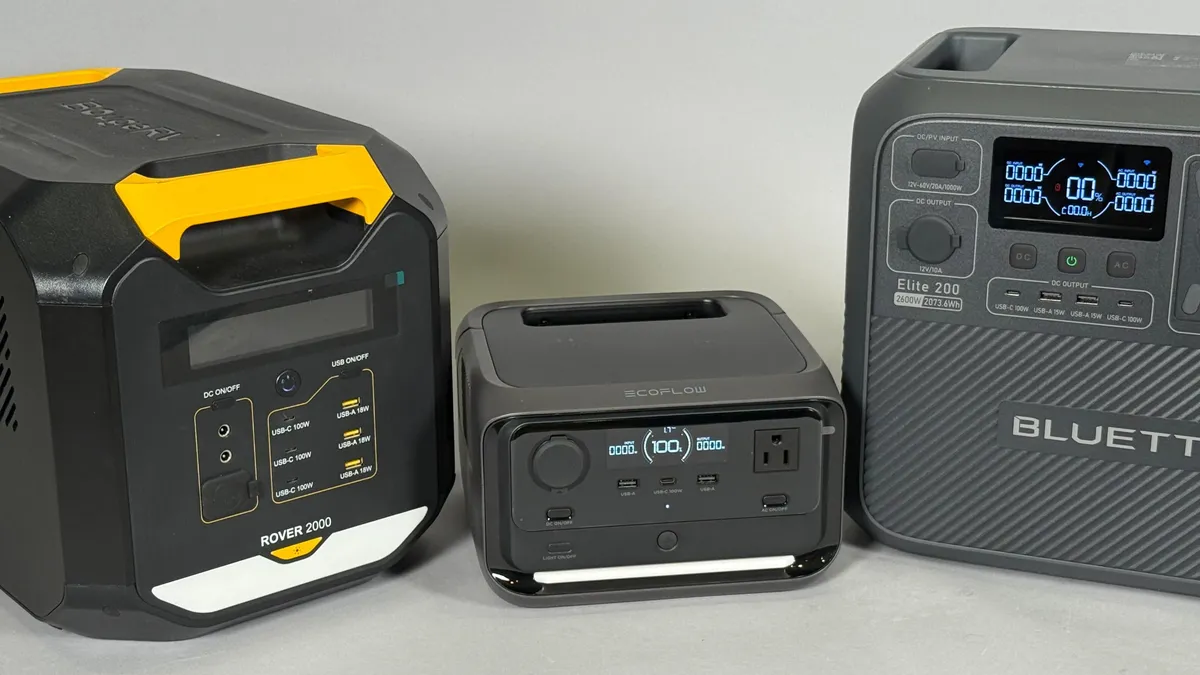Copyright zdnet

Follow ZDNET: Add us as a preferred source on Google. When you think of the best portable power stations, you might think of how easy it is to carry them or travel with them. But what you might forget is that these smaller devices still provide lots of power, whether you're going off-grid, need a source of power during an outage, or are simply camping for the weekend. Also: The best portable power stations for camping We ran dozens of portable power stations through the gauntlet in our lab in Kentucky, where we evaluated how much power each station can provide compared to how much it draws to charge, to determine its overall efficiency. The portable power stations that stood out above the rest were the Jackery Explorer 2000 Plus, the DJI Power 1000, the Vtoman FlashSpeed 1500, and the Oupes Mega 1. Portable power stations were tested for power use over time, measured in watt-hours (the total amount of energy used or produced). We chose to compare the following eight portable power stations based on our editors' top picks and what we have personally gone hands-on with in real-world situations: Jackery Explorer 2000 Plus (see at Amazon)Bluetti AC70 (see at Walmart)Vtoman FlashSpeed 1500 (see at Amazon)Anker 757 Powerhouse (see at Walmart)DJI Power 1000 (see at B&H Photo)Oupes Mega 1 (see at Amazon)Anker Solix C800 Plus (see at Amazon)EcoFlow River 3 (see at Best Buy) How we tested these portable power stations Our lab testing process is centered around measuring the charge and discharge processes of each portable power station, with emphasis on the number of watt-hours consumed and discharged, respectively, and the time required to complete each process. Once all data is gathered, we also compared units using a "Round Trip Efficiency" metric that describes how efficiently a unit provides power compared to how much it draws to charge. The testing apparatus consists of the unit under test (UUT), a HOBO plug load data logger, a computer to save the logged data, and a 480W LED light to consume power. During a charge test, the UUT is plugged into the wall in line with the data logger, which measures and logs the power (watt-hours) being drawn by the unit. The log shows us how long this process takes, giving us our two key takeaways (power and time). Also: How we test portable power stations at ZDNET We primarily test for watt-hours in either direction because they provide the best indication of power usage over time. A unit that provides 100 watts for 10 hours provides 1000 watt-hours. If you instead plug in a 200W load, the unit will only run for five hours, which still ultimately multiplies out to a capacity of 1000 watt-hours. Additionally, the time it takes to charge is a key metric of interest to people, and we measure the time to discharge when connected to a 480W load to provide a standard frame of reference for discharge times. The results To best understand our data visualizations, the power stations that had higher watt-hours compared to time charged were the top performers. This means that for portable power stations to charge to 100% (Figure 1), the top performers were the Jackery Explorer 2000 Plus and the Vtoman Flashspeed 1500. Although their overall time to a full charge is higher than some of the other options, these two power stations offer the best power usage over time. Another solid option power station from Figure 1 is the DJI Power 1000, since both the time to charge and the watt-hours are almost the same. Power stations that take longer to charge compared to their overall watt-hours are less efficient. In the case of Figure 1, that means the EcoFlow River 3. However, if price is the more important factor to you, this portable power station happens to be the cheapest of the ones we tested, at just $249. Figure 2, which shows the time it took portable power stations to reach a 50% charge, yields similar results, except that the Oupes Mega 1 appears as a notable outlier. Like the DJI Power 1000, the Anker 757 Powerhouse also has almost the same time to charge to 50% as the watt-hours. Also: The best cheap portable power stations Our tests might differ from your own experience, depending on how you use a portable power station. However, as a general baseline, our testing provides an expert analysis of how these portable power stations perform and identifies the use cases for which they are best suited.



